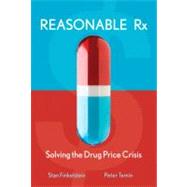
What is included with this book?
PETER TEMIN, Ph.D., a widely cited economist and economic historian, is currently Elisha Gray II Professor of Economics and former head of the Economics Department at MIT. He is the author of Taking Your Medicine: Drug Regulation in the United States.
| Acknowledgments | p. viii |
| About the Authors | p. ix |
| Introduction | p. xi |
| Drugs and Drug Prices | p. 1 |
| The American Way to Discover Drugs | p. 21 |
| The Drug Industry Today | p. 39 |
| Are Drug Companies Risky? | p. 59 |
| How Not to Lower Drug Prices | p. 77 |
| Squandering R & D Resources | p. 103 |
| How to Lower Drug Prices | p. 129 |
| Our Solution in Detail | p. 155 |
| Index | p. 177 |
| Table of Contents provided by Ingram. All Rights Reserved. |
The New copy of this book will include any supplemental materials advertised. Please check the title of the book to determine if it should include any access cards, study guides, lab manuals, CDs, etc.
The Used, Rental and eBook copies of this book are not guaranteed to include any supplemental materials. Typically, only the book itself is included. This is true even if the title states it includes any access cards, study guides, lab manuals, CDs, etc.